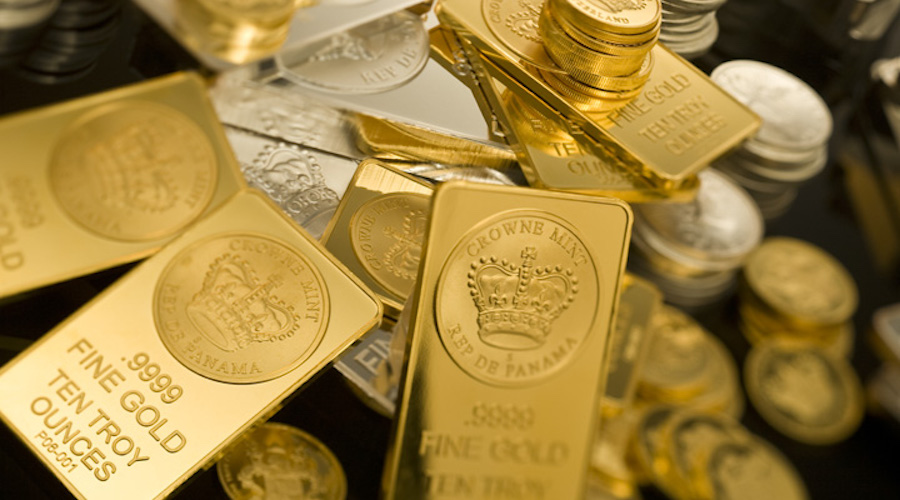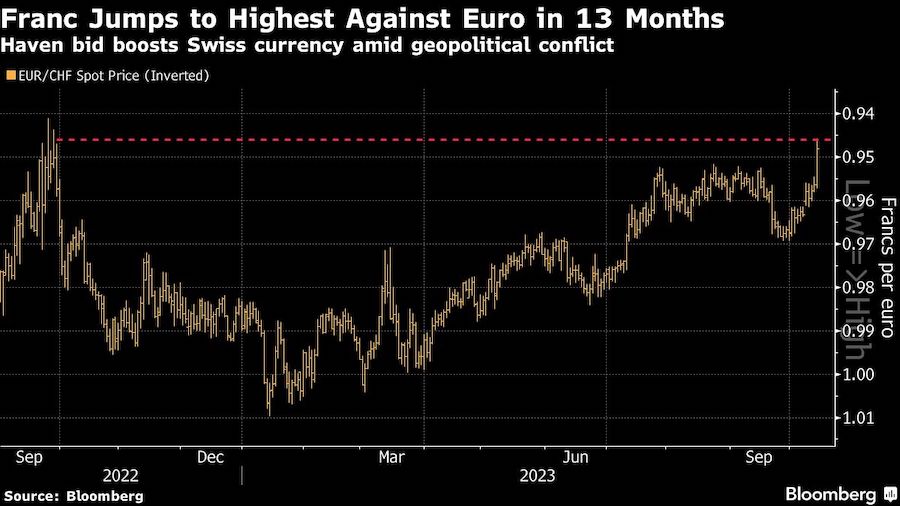
Traders are preparing for another week of wild price swings as continuing conflict in the Middle East fuels demand for haven assets and prompts investors to reconsider their views on global interest rates.
The US dollar, Japan’s yen, and the Swiss franc — all traditional refuges in times of turmoil — will be in focus on Monday as markets reopen at 5 a.m. in Sydney. Risk-sensitive currencies, including the Australian dollar, saw early selling at last week’s open and could again be under pressure. Gold surged by the most since March on Friday.
The market will also scrutinize oil prices and Treasuries, after a tumultuous week in which bonds whipsawed between the biggest gains and losses in years. Israel’s main share index, the TA-35, resumed its decline on Sunday.

The Israeli army has said it’s making preparations for “significant ground operations” in Gaza. Meanwhile, the US has held back-channel talks with Iran in recent days to warn the country against escalating the conflict. US Secretary of State Antony Blinken will make a second stop in Israel on Monday after crisscrossing the Middle East with stops in Jordan, Bahrain, Qatar, Saudi Arabia and the United Arab Emirates.
A wider war in the Middle East risks tipping the world economy into recession, according to Bloomberg Economics. That’s added another concern to investors’ growing list of worries around whether the Federal Reserve has finished raising interest rates and how a rudderless US Congress can avert a government shutdown.
A worsening macro environment, combined with sharp swings in interest rates, has “set the stage” for global volatility to pick up, said Ed Al-Hussainy, global rates strategist at Columbia Threadneedle. Global investors are closely watching whether the Israel-Hamas war spills over into the rest of the region, but — for now — currency traders remain more focused on the Fed, he said.
While broader gauges of market volatility remain subdued, the Swiss currency has surged to the highest in more than a year against the euro, and the US dollar advanced for a fourth week. Volatility in S&P 500 stocks has also increased.
There’s plenty of uncertainty in the US to spur further market fluctuations. Last week, a hot inflation report boosted bets on another rate increase from the Fed, superseding haven flows in the hours that followed and spurring the biggest one-day selloff for 30-year bonds since the onset of the pandemic.
A gauge of anticipated price swings in the world’s largest Treasury ETF exceed those of the biggest stock fund this month by the most since at least 2005, when the data compiled by Bloomberg begin.
Plus, the US House of Representatives remains without a leader. Republicans have nominated Jim Jordan — who has been endorsed by former President Donald Trump — but he faces serious challenges to winning the speakership as more moderate lawmakers in the party worry about his hardline stances.
But conflict in the Middle East remains the biggest wildcard for investors to digest.
“We’re all on tenterhooks wondering which direction this is going to go, but until we become really concerned about oil supply, the market is going to wait with bated breath,” said Jane Foley, head of currency strategy at Rabobank.
(By Carter Johnson)
Comments